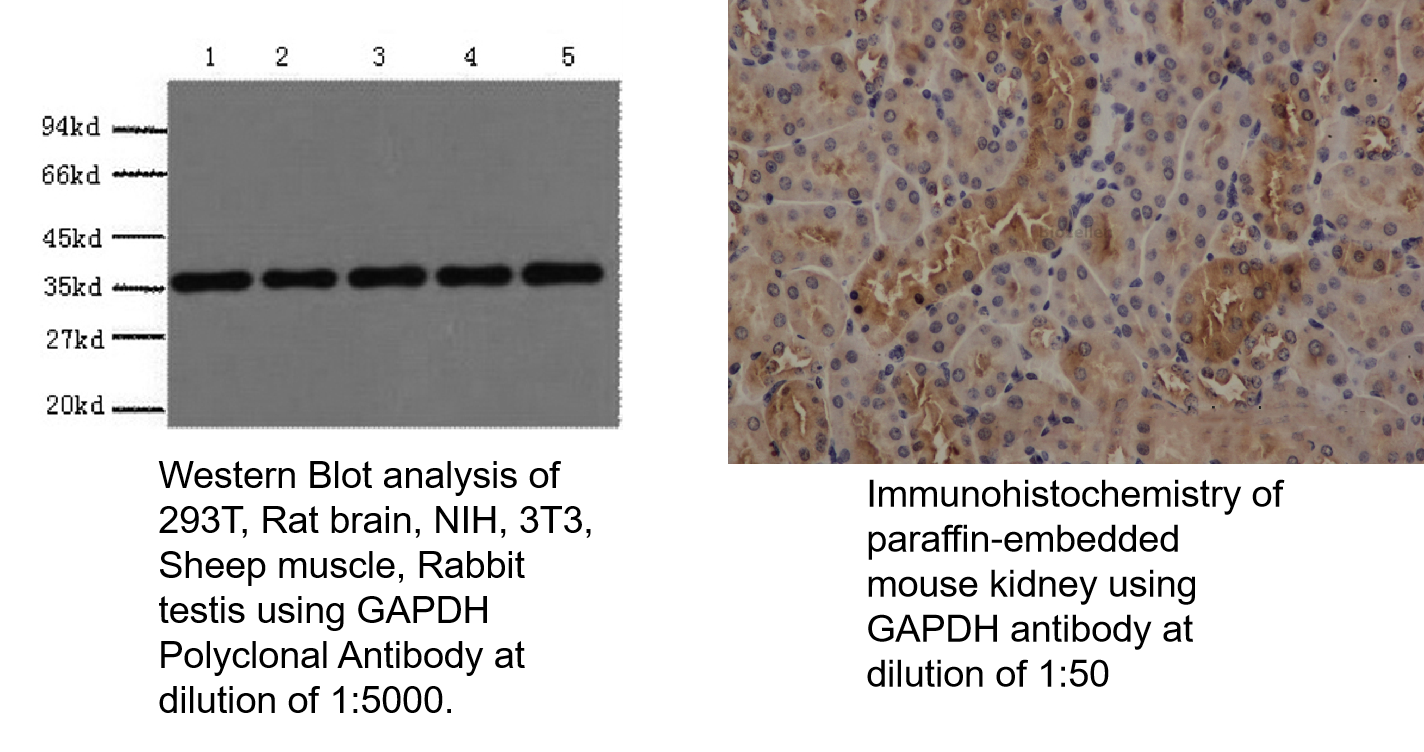| Synonyms | Aging associated gene 9 protein,Epididymis secretory sperm binding protein Li 162eP,G3P,G3PD,G3PDH,GAPD,GAPDH,Glyceraldehyde 3 phosphate dehydrogenase,Glyceraldehyde-3-phosphate dehydrogenase,HEL S 162eP,Peptidyl-cysteine S-nitrosylase GAPDH |
| Swissprot | P04406 |
| Source | Rabbit |
| Reactivity | Human,Mouse,Rat,Monkey,Chicken,Rabbit,Sheep,Xenopus |
| Immunogen | Recombinant Protein |
| Application | WB,IHC-p |
| Recommended dilution | WB 1:2000-1:5000, IHC 1:50-1:200 |
| Concentration | 1mg/mL |
| Clonality | Polyclonal |
| Cellular localization | Cytoplasm>cytosol. Nucleus. Cytoplasm>perinuclear region. Membrane. Translocates to the nucleus following S-nitrosylation and interaction with SIAH1, which contains a nuclear localization signal (By similarity). Postnuclear and Perinuclear regions. |
| Isotype | IgG |
| Purification | Affinity purification |
| Conjugation | Unconjugated |
| Storage instructions | Store at -20℃. Avoid freeze / thaw cycles. |
| Storage buffer | PBS with 0.02% sodium azide, 50% glycerol, pH7.4 |
| Background | Glyceraldehyde-3-phosphate dehydrogenase (GAPDH) catalyzes the phosphorylation of glyceraldehyde-3-phosphate during glycolysis. GAPDH participates in nuclear events including transcription, binding RNA, RNA transportation, DNA replication, DNA repair and apoptosis. Being stably and constitutively expressed at high levels in most tissues and cells, GAPDH is considered a housekeeping protein. It was widely used as a control for RT-PCR and also loading control in electrophoresis and Western blotting. GAPDH is normally expressed in cellular cytoplasm or membrane, but can occasionally translocate to the nucleus post modification such as S-nitrosylation. |
